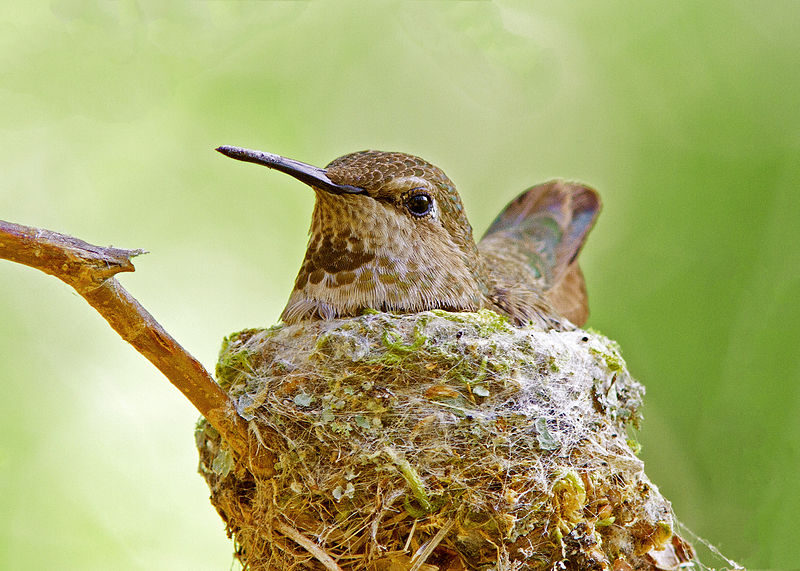

We’re here to help! Wild Yards is a completely free website that is 100% dedicated to helping you create a wildlife-friendly, sustainable yard. Read more
WildYards is reader-supported. When you buy a product through a link on our site, we may earn a comission. Every product is independently selected by our (obsessive) editors and our reviews are unbiased and objective. Read more about our mission or our privacy policy.
Consider yourself lucky if you’ve ever seen a hummingbird nest with your own eyes.
These tiny nests, holding even tinier hummingbird eggs, are an engineering marvel and they’re so well camouflaged that you’ve probably walked past one without even knowing. In this post, you’ll learn everything there is to know about hummingbird nests. Including where to find one, what a hummingbird nest looks like, how small they really are, and all about hummingbird eggs.
What does a hummingbird nest look like?
Hummingbird nests are small and cup-sized. The size of the hummingbird nest is proportionate to the size of the hummingbird. Smaller hummingbirds will build nests that are half the size of a walnut shell. Larger hummingbirds will build larger nests.
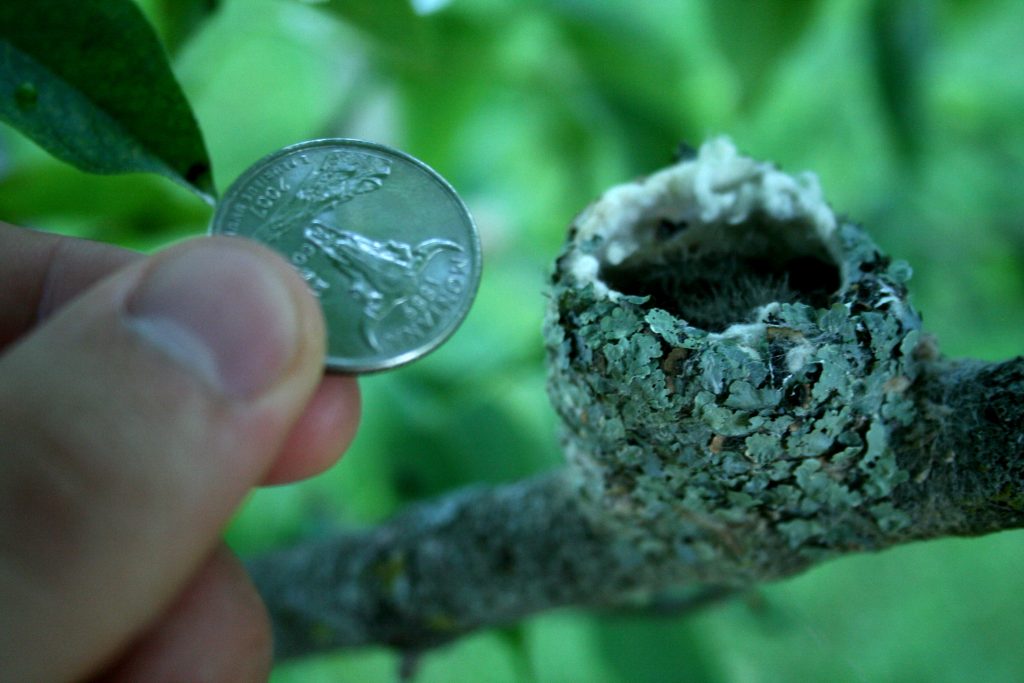
What are hummingbird nests made of?
Hummingbird nests are most of often made of soft plant fibers and leaves. They’re held together with spiderwebs that the hummingbird collects.
The spider silk makes the nest very durable and it can last many seasons. In fact, some hummingbird species come back every year to re-use their nests – after rebuilding it a little bit. This is why sometimes a nest can have a “layered” look to it.
Another great benefit of spider silk, is that it makes the nest somewhat elastic, so it can grow accordingly as the hummingbird babies grow.
Some hummingbird nest pictures:
Words can’t do a hummingbird nest justice. Here are a few pictures that can better convey the elegance of them.
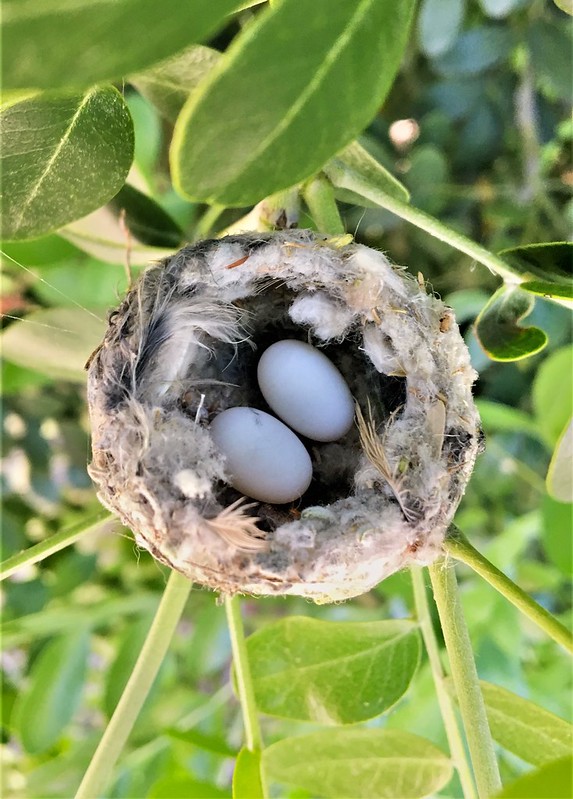
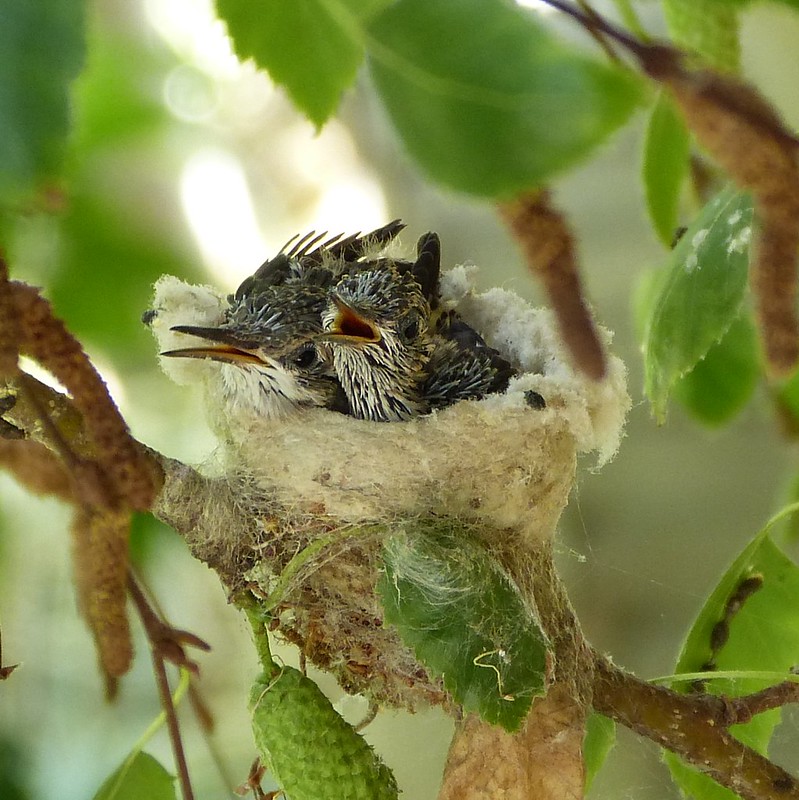
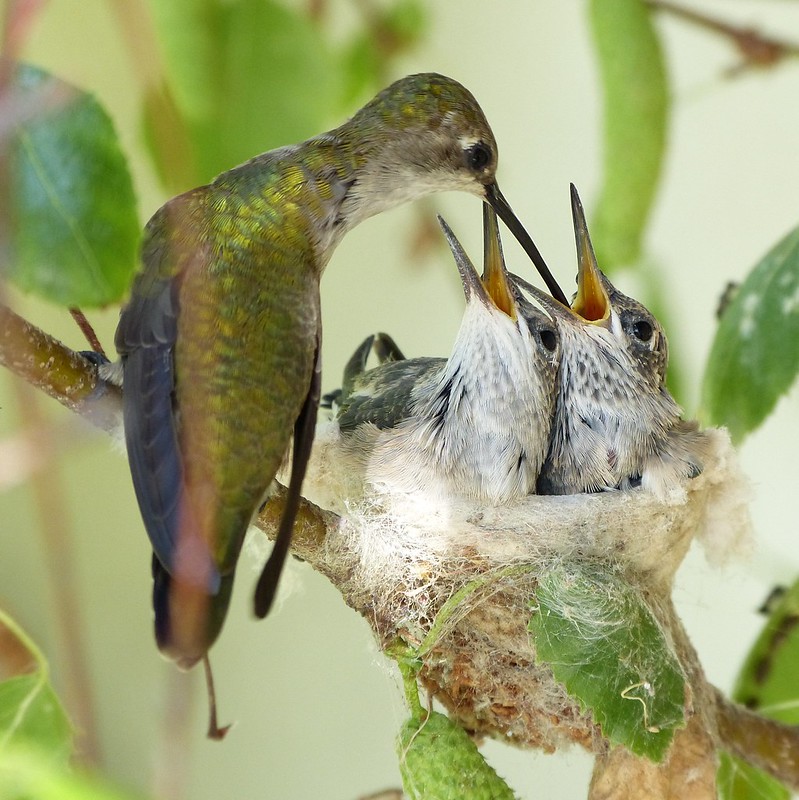
Where do hummingbirds nest?
Hummingbirds like to build their nest where there is plenty of overhead cover and foliage to hide their nest. The overhead cover is to protect from rain and the elements and the foliage is to hide the nest from potential predators.
You can find hummingbird nests in forked branches of large trees and small shrubs that are near nectar sources. If you want a hummingbird to nest in your backyard, it’s a good idea to get a good hummingbird feeder. Or plant lots of nectar-producing flowers. Hummingbird vines often provide both nectar and a great nesting spot for hummingbirds.
Of course, as hummingbirds have adapted to human presence, they’ve found creative and odd places to build nests on man-made structures.
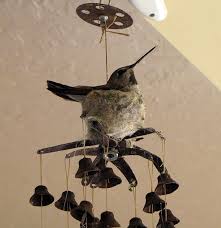
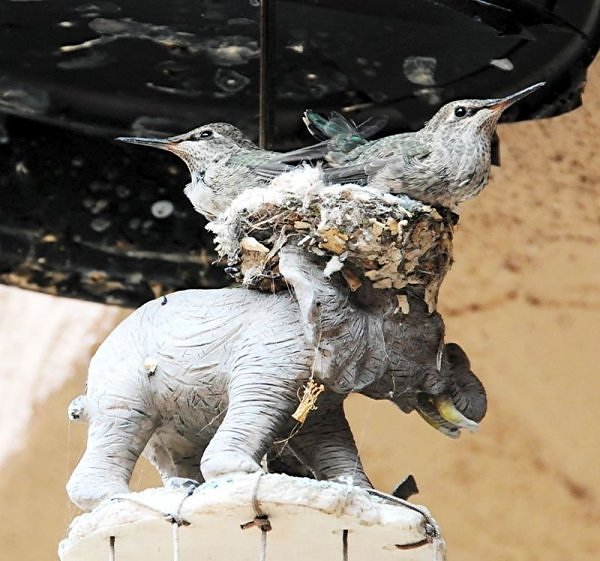
How to find a hummingbird nest
Unless you’re very lucky, it’s unlikely you’ll just stumble upon a hummingbird nest.
If you are dead set on seeing on in real life, here’s how I’ve personally found a few hummingbird nests.
First, realize that this might take a while. Find a spot with plenty of nectar sources that are frequented by hummingbirds. If you have a feeder in your backyard, that’s a good place to start.
Then when you see a hummingbird leave the feeder, try to track down where it goes. It may be hard to follow the hummingbird, but eventually it will return to its nest.
I’ve done this successfully a few times, and it was definitely worth the effort to track down the hummingbird nests.
How to help a hummingbird build it’s nest
If you want to increase the chances of a hummingbird building a nest in your own backyard, there are a few steps you can take.
Planting shrubs and trees that provide the hummingbird with soft fibers for nest building is a great start. Plants and trees such as Pussy Willows, Cottonwoods, and Mulberry shrubs are perfect examples.
Growing nectar producing flowers or putting up a hummingbird feeder is another way to attract hummingbirds to your yard.
If you REALLY want a hummingbird to nest in your yard, then consider offering them a nesting material that’s perfect for nest building. The “Hummer Helper” is an all-natural, man-made alternative to soft plant matter. It’s endorsed by the Hummingbird Society and comes in a wire frame hanger that you can hang near your window so you can observe hummingbirds.
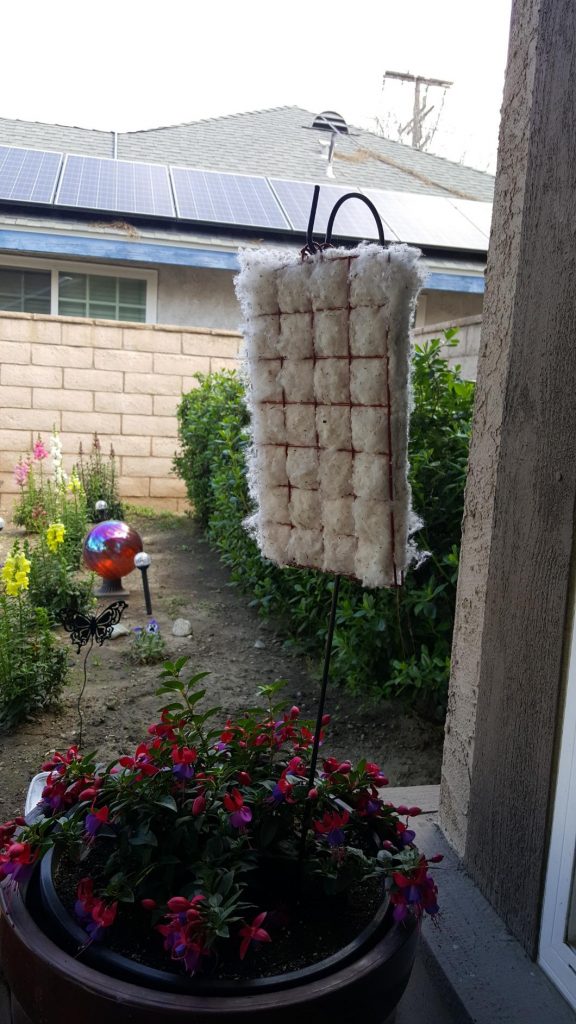

Thank you for your article. I adore the 2 hummers that come everyday to my very large patio garden, although one definitely dominates and shoos the other away so they never feed at the same time. Its October 22 in Vancouver, B.C., and I still have beautiful purple salvia flowers that they love, it would be a dream if they built a nest in one of my trees but they are all Maples so they drop their leaves, I assume that wouldn’t work? I do have a fountain and they sit on the top washing themselves, their faces, its priceless.
I have had 3 nests built by hummingbirds 1 was successful and the babies fledged. The second time, the nest was built on the same peach tree, but a giant lizard ate both eggs. This devastated m. So i had my husband to cut the peach tree down, since i have more lizards that will not go away. This third time a nest was built on my wind chime under my backyard porch. It has been a little past 18 days and still no sign of babies. I have a ring camera focused on the nest and i noticed a male prevents her from sitting on her nest and chases her away. I never saw this before and the mother hummingbird will come back after she detects he is gone from hanging on the wind chime. My question is, if she has not been able to regulate the perfect warmth or heat for the eggs to hatch, will the mother know if the eggs are still viable. Today is day 18.
Hi Eddie,
Hummingbird eggs typically can hatch anywhere between 14 – 21 days. I would wait a bit longer to see if the eggs hatch. If not, it may be that they haven’t been incubated properly.
we found a Baby hummingbird that we think either fell out of the nest (apple orchard) or has not learned how to fly yet maybe pushed out by another baby in nest?. my husband thinks it is too young still to fly. It is eating well from a feeder we set up on the ground. hopped around allot, flaps it’s wings several times, really try’s but just can’t take do lift off. we are trying to find the nest but not having much luck as this is the 1st time for us. we have had hummingbirds come to the feeders by the one the baby is on & eat, talked to it, a few have hovered over/around talked to it. had like a talking, tapping/pushing on it 2 separate times not sure what that means. need to get it home or learn how to teach it to fly. Any suggestions, idea’s on all this.
Hi Cheryl,
If you find a baby hummingbird fallen out of the nest that has a few feathers on it – it may be that the bird has some defect and the mother hummingbird has discarded it (as cruel as it sounds).
You can try and rehab the baby bird with nectar and supplemental feedings, but it may never be able to fly properly and be a normal hummingbird. It’s up to you on how you’d like to proceed! I’d suggest contacting your local wildlife rescue to see if they can help.
Hello,
I have an Anna’s hummingbird that built a nest right in front of my eyes. I’ve been watching her for the past couple of weeks, and even saw her sitting in the nest. Not sure if there are eggs in the nest, but I kind of don’t think so. The nest is located on a fairly low lying branch of a bottle brush shrub. It’s right outside my computer window, so I can see all of the activity. I noticed yesterday and today that she seems to removing some material from the nest. I provided dog fur (white Pyrenees, so I can see it easily) for her, which she has used on the inside of the nest, but that is what she seems to be removing, and taking to a different location. Is it possible she has decided this is not a good location, and is building another nest?
My brother has a hummingbird nest and is wondering if there are any places or people interested in purchasing it.